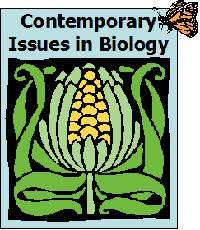
Week 11, Chapter 8 -- Digging Deeper Sample Answer
Course home | Weekly schedule | Announcements | Instructor Info | Desire2Learn | MasteringBiology® | Honor Code | FAQs | HELP!
 |
Week 11, Chapter 8 -- Digging Deeper Sample AnswerCourse home | Weekly schedule | Announcements | Instructor Info | Desire2Learn | MasteringBiology® | Honor Code | FAQs | HELP! |
Chapter 7 Digging Deeper Sample Report
Because my name starts with an “R”, I chose to report on the genetic disorder “Rett Syndrome” for this assignment.
Rett syndrome, also known as RTT, is a genetic disease that affects the nervous system of children. The children appear normal when they are born, up until about 8 to 18 months, after which the symptoms start to appear. Rett syndrome was first described by a European physician who noticed two little girls sitting side by side in his office, both having similar symptoms. The disorder was later termed Rett syndrome after this physician who first noticed and then described the disease.
Rett syndrome is a dominant, sex-linked genetic disorder caused by a mutation in a gene on the X chromosome carried by the father. This is why girls get the disorder more than boys. A sex-linked trait is one that is present on the sex chromosomes. Have you ever heard that boys have “X” and a “Y” chromosomes and girls have two “X” chromosomes? Your DNA in your cell is packaged in the form of a chromosome. Your DNA holds your genes. Your genes are what determine everything about you, such as your hair color, eye color, heights, etc. Your genes are located on your chromosomes. Every human has 23 pairs of chromosomes. Twenty-two of those pairs are called autosomal chromosomes (those are the ones that carry lots of genes but do not determine sex), and one pair (the 23rd pair) is your sex chromosomes. In other words, that 23rd pair determines whether you will be female or male (females having two X’s and males having an X and a Y).
Rett syndrome is caused by a mutation (a problem with the DNA) on the “X” chromosome of that 23rd pair. When fathers carry the mutation for Rett Syndrome on their X chromosomes, this increases the chances of daughters inheriting the disease. Genes code for proteins, which serve really important functions in your body. The gene that is responsible for Rett Syndrome (called MECP2 gene) produces a very important protein called methyl CpG-binding protein 2, which is responsible for turning on and off other important genes. A mutation in the MECP2 gene messes up the encoded protein, so the other genes do not get turned on at the right time during brain development. The brain doesn't develop correctly, which means the child develops Rett Syndrome and all of the problems that go along with it. Rett Syndrome is passed down from parents to the child (inherited), but usually does not affect more than one child in a family, because the mutation is irregular (or sporadic).
Kids with Rett syndrome usually seem fine for months, or even until they are toddlers, but then the symptoms begin to show. One of the first signs of Rett Syndrome is loss of muscle tone. In other words, kids with Rett Syndrome have weaker muscles than other kids. Other symptoms include loss of the use of hands, loss of the ability to speak, spastic movement (jerky and uncontrolled), slowed growth, microcephaly (this is when the head is too small), rapid deterioration of brain function, severe dementia (not knowing who or where you are), and autism. Rett Syndrome is a very severe disorder, but kids with the disease can usually grow to adults.
There is currently no cure or treatment of Rett Syndrome. Several drugs which increase dopamine levels in the brain have been tested in kids with Rett syndrome, but none has shown positive results. Not much is known about the disorder, so no one is really sure what the expected lifespan is for most people with Rett Syndrome. It does appear, however, that people with Rett Syndrome do not get much worse after childhood. Further research is currently underway to learn more about this serious disorder and what we can do to help those who suffer from it.
If I had a friend whose child was diagnosed with Rett Syndrome, I would learn more about the disorder and ask what I could do to help make my friend's life a little easier. For example, if I learned how to feed, bathe, lift, carry, and communicate with the child, I could babysit so that my friend could occasionally have time alone to take care of his or her own needs. My friend may also need help with transportation or finding equipment that might help make the child happier or more comfortable.
[744 words without references]
References
WebMD. March 17, 2004. Report from National Organization for Rare Disorders, Inc. ® (NORD). http://www.webmd.com/hw/health_guide_atoz/nord182.asp.
Downloaded October 4, 2006.
National Institute of Neurological Disorders and Stroke. January 25, 2006. Prepared by Office of Communications and Public Liaison. http://www.ninds.nih.gov/disorders/rett/detail_rett.htm#55513277. Downloaded October 4, 2006.
National Center for Biotechnology Information. September 27, 2006. Online Mendelian Inheritance in Man. John Hopkins University. http://www.ncbi.nlm.nih.gov/entrez/query.fcgi?CMD=search&DB=OMIM. Downloaded October 4, 2006.
International Rett Syndrome Foundation. 2008. Rett Syndrome FAQ. http://www.rettsyndrome.org/index.php?option=com_content&task=view&id=14&Itemid=375#003. Downloaded May 14, 2008.